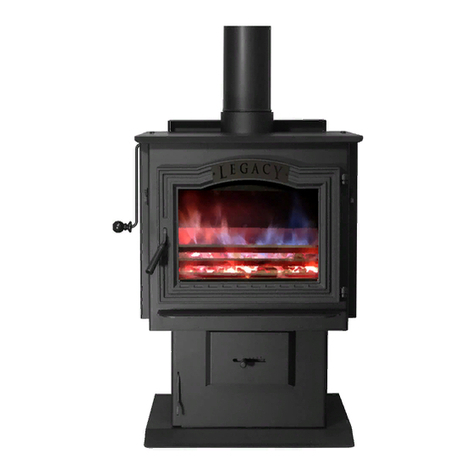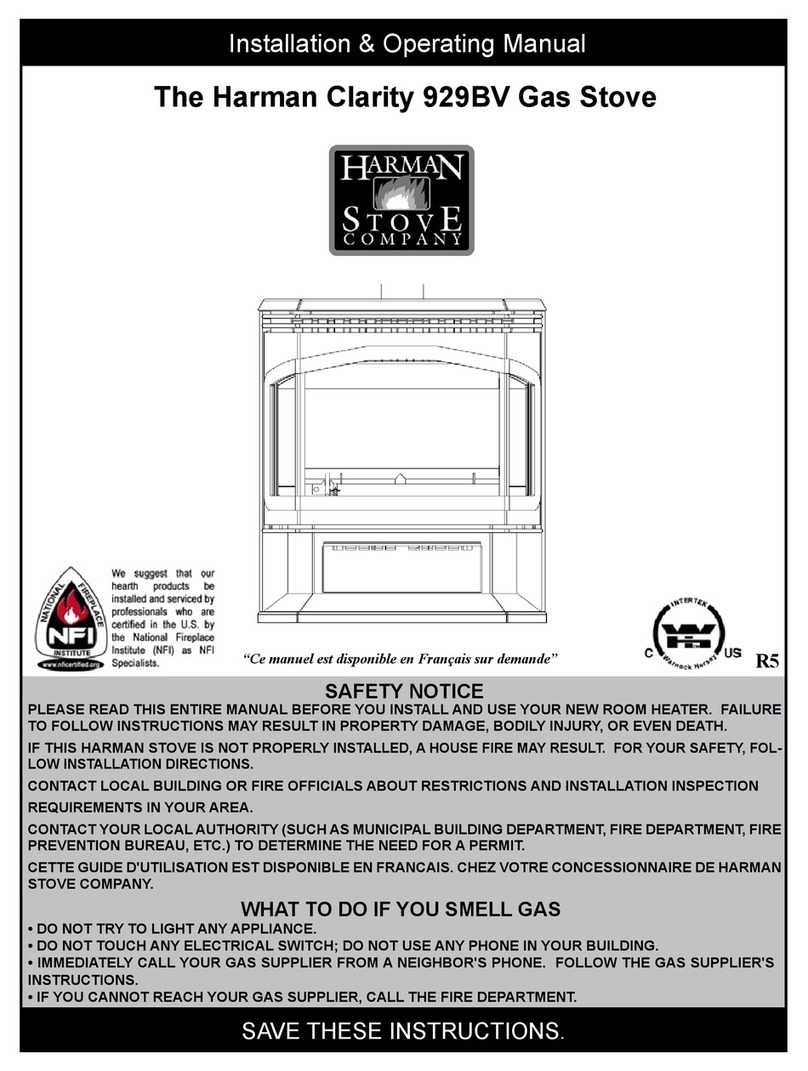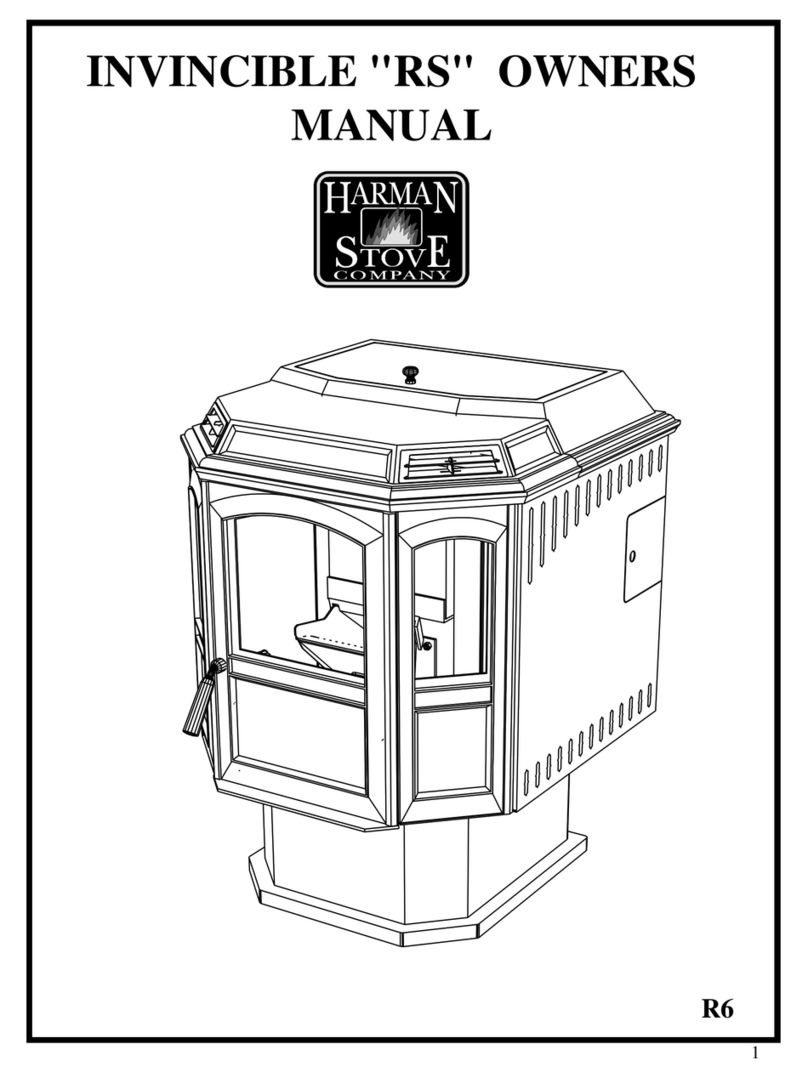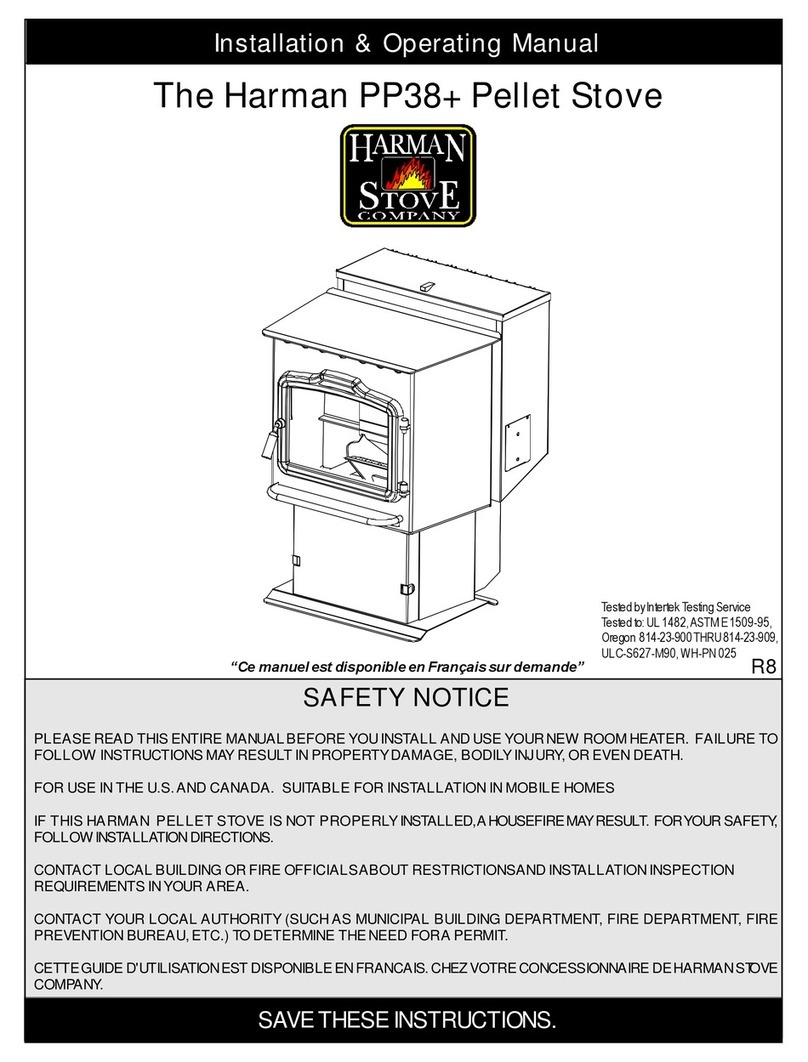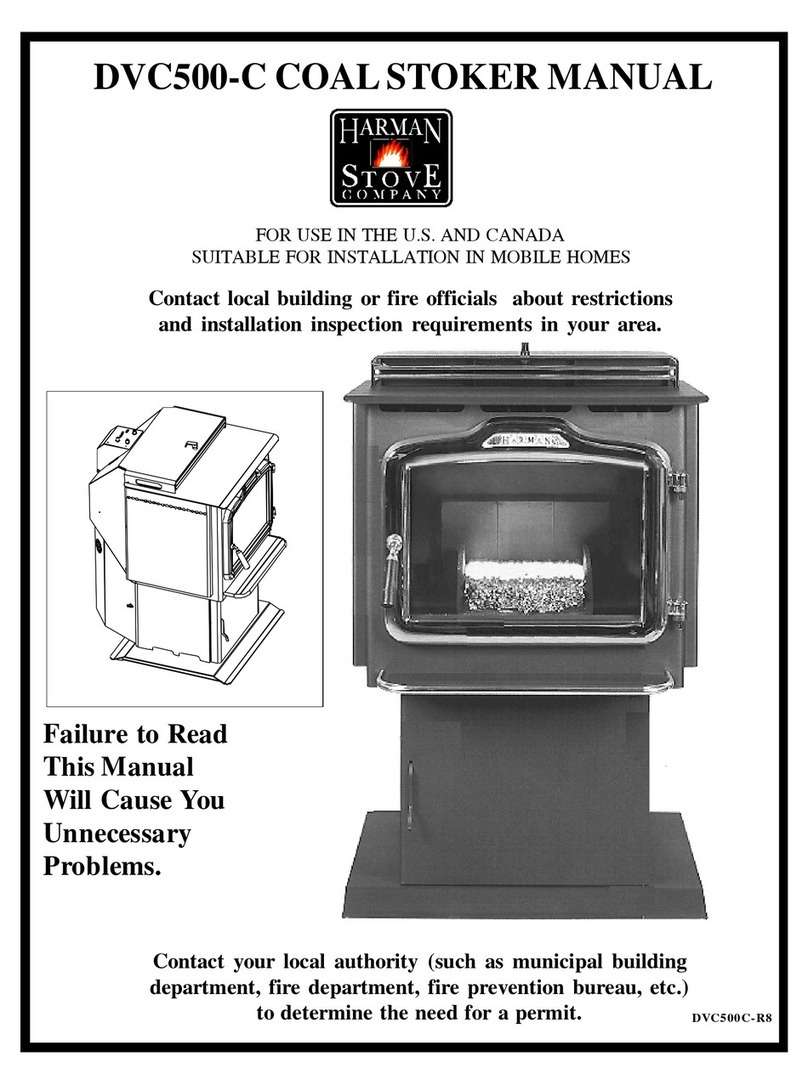
TLC 2000 Coal Stove 15
The Chimney System
Creosote
When wood is burned slowly, it produces tar and
other organic vapors, as well as soot, which combine with
expelled moisture to form creosote . The creosote vapors
condense in therelatively coolchimney flue(associated with
a slow burning fire). As a result, creosote accumulates on
the flue lining. When ignited, this creosote can result in an
extremely hot fire.
The chimney should be inspected at leastonce every
two months during the heating season to see if any creosote
build-up has occurred. Checkingyour chimneyand chimney
connector more frequently, especially while you are getting
used to your stove, isrecommended. To inspectthis system,
let the stove cool. Using a flashlight and mirror, check the
interior of the chimney connector, and the chimney itself. If a
significant layer of creosote or soot has accumulated (1/8"”
or 3 mm) it should beremoved to reduce therisk of achimney
fire. To clean deposits from the surface of the connector,
use a stiff wire brush after dismantling the connector assem-
bly. To clean the chimney, use a specially designed brush
sized to fityour particular flue opening, or call an established
chimneycleaning service.
At theend of the heatingseason, perform a thorough
examination of your chimney system, and have it repaired if
necessary.
Draft
Draft is widely misunderstood. It is important that
you, the stove operator, realize that draft is a variable effect,
not a given quantity. Stoves and chimneysdo not havedraft,
yet draft is the key to your stove’s performance.
Draft is a force, produced by an operating stove and
the chimney to which it is attached. It is created by hot gases
risingup the chimney, creatinga pressure difference between
the inside of your home and the outside air. It continually
moves fresh combustion air into the stove, and hot exhaust
gases outof thestove;withoutthis constantflow, the fire will
go out. Other factors, such as barometric pressure, winds,
the airtightness of the home, thetotal inside chimney volume,
chimney height and the presence of venting devices such as
exhaustfans also playa role in maintaining an adequate draft.
Low barometric pressures, super insulated homes and ex-
haust fans can reduce draft;winds can play havocwith draft;
and too large or too small a chimney volume can cause re-
duced draft due to theexcessive coolingor notenough room
to vent exhaust gases quickly.
Some signs of inadequate draft are smoking, odor,
difficulty in maintainingthe fire, and low heat output. Over-
draft can be caused by a very tall chimney even if it is the
recommended size, and can cause overfiring of your stove.
Signsof an overdraft includerapid fuelconsumption, inability
to slow the fire, and parts of the stove or chimney connector
glowingred. Itisimportant that youfollow thechimneyguide-
lines in this manual, includingsize, type, and height to avoid
draft problems.
When installed and operated accordingtothis manual,
the TLC2000willproduce enoughhotgasesto keepthechim-
ney warmso thatadequatedraftismaintainedthroughout the
burn cycle.
Chimney Connectors
In general,followingtheseguidelines willensurecom-
pliance with all national and provincial codes;prior to begin-
ningyour installation, check with yourlocal buildingcode offi-
cial tocheck on additional localregulations which mayinflu-
ence the design and placement of your venting system.
The Harman TLC 2000 may be installed with (150
mm) 24 gauge chimney connector pipe. Size of the connec-
tor should correspond to the size of the flue collar opening.
Do not use makeshift compromises. No part of the chimney
connector may pass through an attic or roof space, closet or
other concealed space, or through a floor or ceiling. When-
ever possible, avoidpassing the connector through a combus-
tible wall; if you must, use an approved wall pass-through,
described later in this section.
Assemble the connector beginning at the flue collar,
with the crimped ends pointing towards the stove (to keep
debris and creosote flakes inside the system). Each joint,
including the one to the stove’s flue collar and the one to the
chimney itself should be secured with at least three sheet
metal screws. Screws may be a maximum of 3 inches apart.
A 1-1/4" (30mm) overlap is required ateach joint, including
the flue collar attachment. No more than two 90 degree el-
bows should be used, and the totallength ofconnector should
not exceed 10 feet (3 m). All horizontal runs of connector
must have a minimum upward slope of 1/4"(6 mm) per foot
(20 mm per meter).
Wall Pass-throughs
Occasionallyit isnecessary to pass the chimney con-
nector through a combustible wall to reach the chimney.
Depending onyour localbuilding codes,and thepertinentpro-
vincial or national codes, there are several choices for ac-
complishing this safely. Before beginning your installation,
contact local officials, and also the chimney connector and
chimneymanufacturer for specific requirements.
Canada. Three methods areapproved by the Cana-
dianStandards Association. Thediagram shows one method
requiring an 18"(450 mm) air space between the connector
and thewall. It allows useof one or two covers as described
in thediagram. The two other methods are describedin detail
in the current issue of CAN/CSA B365, the national stan-
dard. United States In the U.S., the national codeis NFPA
211. While many localities adopt this standard, be sure to
check with local authorities before beginningyour installation.























